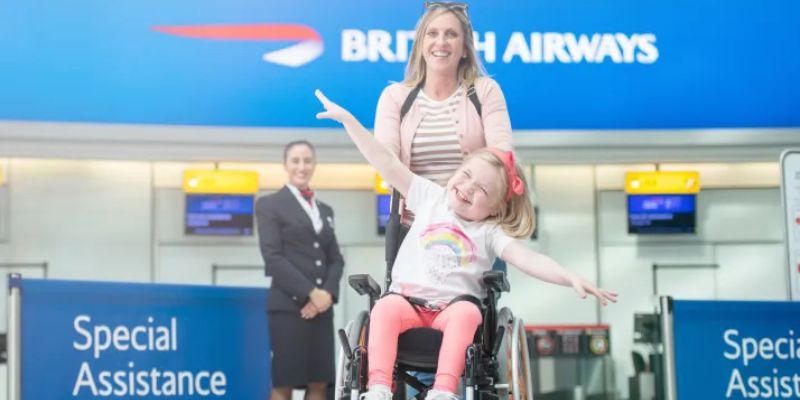Passengers can request wheelchair assistance when booking their flight or afterward through the British Airways Wheelchair Assistance website. The process is straightforward and allows travelers to specify exactly what kind of support they need—whether it's help getting to the aircraft, transferring between seats, or navigating the airport. Although the airline recommends submitting requests at least 48 hours before departure, earlier is always better. This gives the airline and airport staff enough time to prepare and ensure the proper equipment and personnel are in place. The booking process also allows passengers to note other accessibility needs, including vision or hearing impairments, medical conditions, or assistance with service animals. The goal is to provide personalized care tailored to each passenger's circumstances.
Airport Assistance: From Curb to Cabin
British Airways Wheelchair Assistance begins as soon as you arrive at the airport. Whether you're dropped off at the curb, parking lot, or train station, support staff are available to meet you and begin the assistance process. At the terminal, you’ll be guided through check-in, security screening, and on to your departure gate. British Airways staff are trained to provide respectful and attentive support at every stage, including:
- Helping with check-in and boarding passes
- Escorting passengers through security and passport control
- Providing wheelchairs or guiding those with mobility challenges
- Assisting with transfers between terminals if needed
- Offering pre-boarding to allow extra time to get settled
Airports can be overwhelming, even for experienced travelers. Having trained professionals guide you through makes a significant difference, both physically and emotionally.
Personal Wheelchairs and Mobility Aids
If you’re traveling with your own wheelchair, British Airways takes careful steps to handle it properly and respectfully. Passengers can use their wheelchair up to the aircraft door at most airports. From there, it is safely stowed in the aircraft hold. The airline permits two mobility aids per passenger free of charge, in addition to your standard baggage allowance. This can include manual or electric wheelchairs, scooters, walking frames, or other devices. If your mobility aid is battery-powered, it's important to inform the airline in advance. Certain batteries must be disconnected, and size or weight limits may apply depending on the aircraft. By providing the make, model, and dimensions, you help ensure safe and efficient handling. Upon landing, British Airways aims to return your wheelchair to you at the aircraft door. If that’s not possible, assistance will continue to baggage claim where the device will be returned as quickly as possible.
Onboard Accessibility and In-Flight Support
Once onboard, the airline continues to support passengers with mobility challenges. Many British Airways aircraft—particularly those on long-haul routes—feature accessible seating and onboard wheelchairs that allow movement to and from lavatories.
The cabin crew is trained to:
- Help passengers transfer to and from their seats
- Store mobility aids or special medical devices
- Answer questions and assist with comfort and safety
- Provide assistance using the onboard aisle wheelchair
While the crew cannot offer personal care in the restroom, they will do their best to help within what safety and policy allow. British Airways also considers the needs of passengers with non-visible disabilities, such as autism or anxiety. Quiet boarding options and communication accommodations are available for those who request them. Inflight entertainment systems on many aircraft offer accessibility options like closed captions, audio descriptions, and screen magnification. Seating accommodations can also be arranged for easier access. Passengers are encouraged to reserve suitable seats early, especially those near lavatories or with additional legroom.
